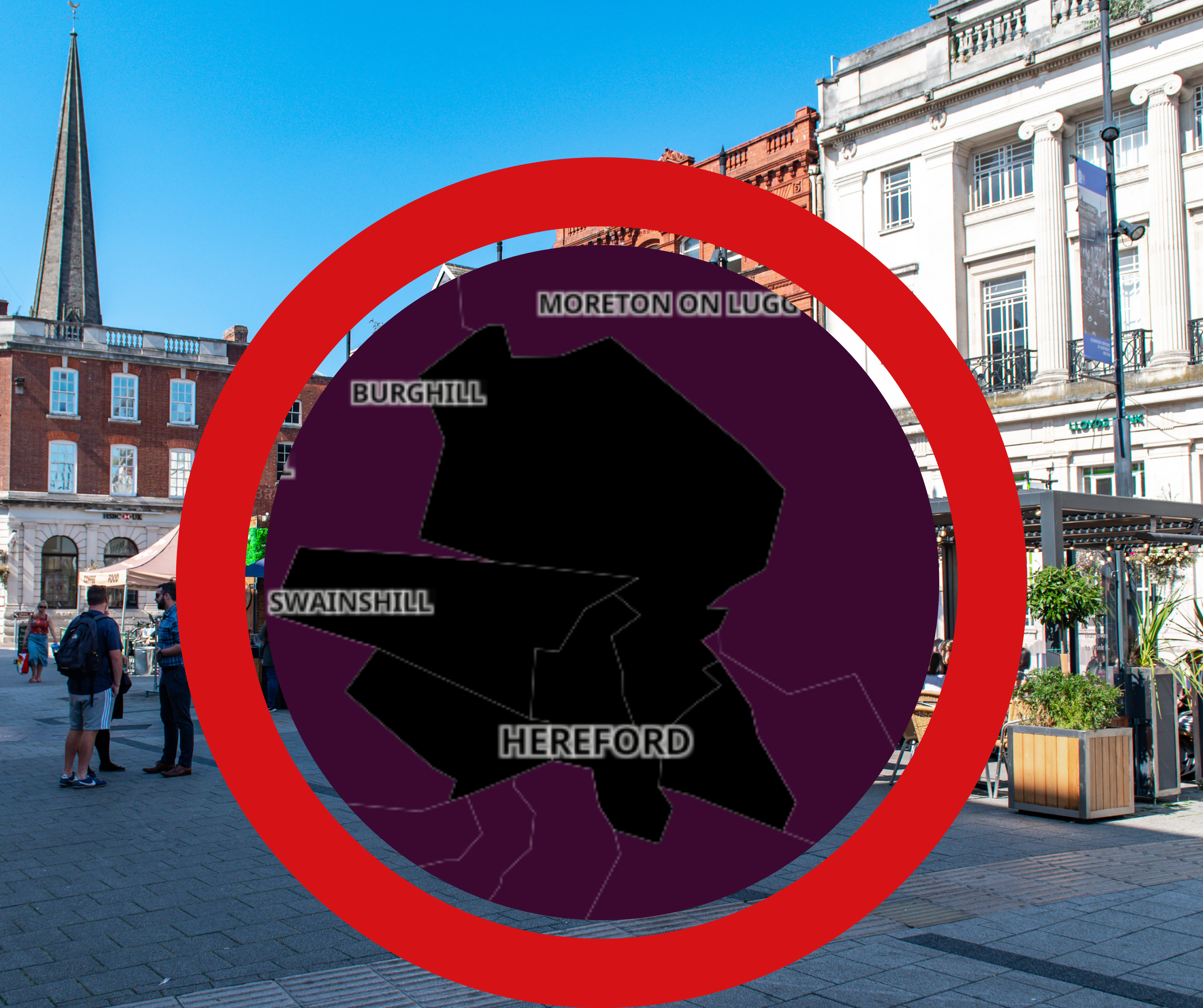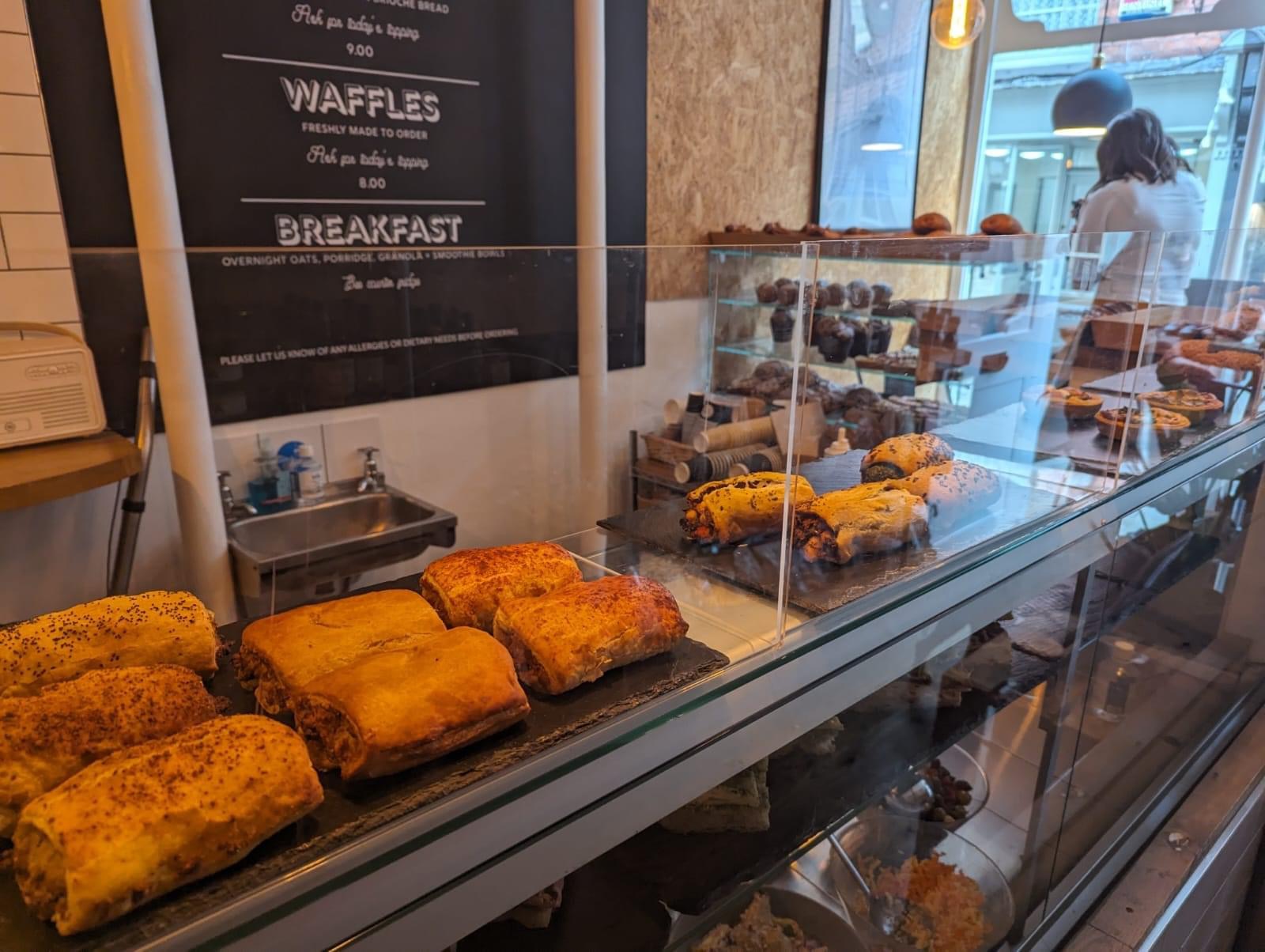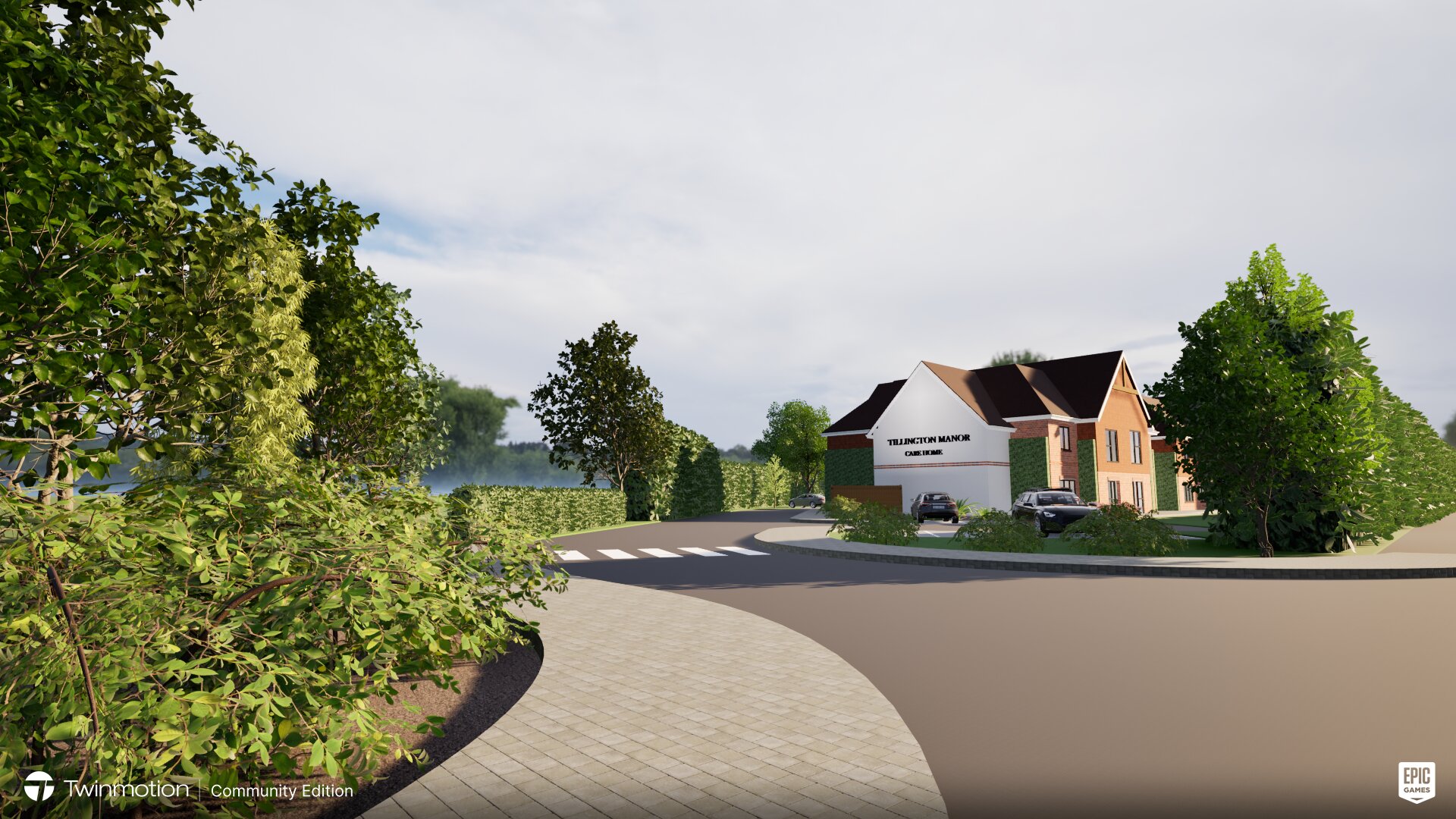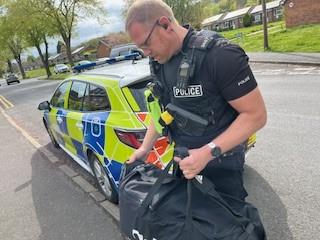Latest data released by Public Health England shows that five areas of Hereford are continuing to record ‘extremely high’ levels of COVID-19 infection.
In total, in the seven day period ending 3rd January, a total of 2,671 new cases of COVID-19 were recorded in Herefordshire. This is an increase of 71.4% on the previous seven day period. This gives a COVID-19 infection rate of 1,380 cases per 100,000 population.
The five areas of Hereford that are currently recording ‘extremely high’ levels of infection are as follows:
Hereford West – 137 new cases recorded. (Infection rate of 1,896 cases per 100,000 population)
Hereford North East – 147 new cases recorded. (Infection rate of 1,855 cases per 100,000 population)
Hereford Central – 204 new cases recorded. (Infection rate of 2,011 cases per 100,000 population)
Hereford North West – 155 new cases recorded. (Infection rate of 1,651 cases per 100,000 population)
Hereford East – 97 new cases recorded. Infection rate of 1,632 cases per 100,000 population.
SOURCE: Interactive map of cases | Coronavirus in the UK (data.gov.uk)
The number of patients with COVID-19 at hospital in Herefordshire is rising, as infection rates in the county hit record levels, prompting Wye Valley NHS Trust to urge local residents to remain up to date with their COVID-19 vaccinations.
Latest data released by NHS England shows that on the 4th January, a total of 25 patients at hospitals in Herefordshire (Wye Valley NHS Trust) had COVID-19. This is an increase from Christmas Eve when just seven patients were recorded as having the virus at hospital. It must be noted that the numbers still remain well short of the peak early last year (2021) when more than 100 patients were recorded as having COVID-19 at hospitals in the county.
The good news, is that on 4th January, data showed that no patients were requiring mechanical ventilation for COVID-19.
This all comes as COVID-19 cases continue to sharply rise in Herefordshire, with record levels of infection recorded across the majority of the county. In the seven day period ending 1st January, a total of 2,494 cases of COVID-19 were recorded in Herefordshire. This is an increase of 100.8% on the previous seven day period and means that the COVID-19 infection rate in Herefordshire is currently 1,288 cases per 100,000 population.
Due to the increase in cases both locally and nationally, Wye Valley NHS Trust is urging local residents to remain up to date with their COVID-19 vaccinations.
A spokesperson for Wye Valley NHS Trust told Your Herefordshire:
“As expected, with the increasing numbers of Covid-19 cases in the community, we are seeing an increase in the number of confirmed COVID-19 inpatients in our hospitals.
“We would urge the public to make sure they are up to date with the COVID vaccinations, including the booster vaccination as a matter of urgency, to help reduce the risk of serious illness from COVID-19 and the Omicron variant.
“A booster dose of the COVID-19 vaccine is available for everyone aged 18 and over, and some people aged 16 and over, who have had two doses of the vaccine at least three months ago. Everyone aged 12 and over can get a 1st and 2nd dose of the vaccine. To book vaccination/booster visit:
•www.nhs.uk/conditions/coronavirus-covid-19/coronavirus-vaccination/
•For more information about where to get vaccinated, follow this link
•Find a walk-in coronavirus (COVID-19) vaccination site – NHS (www.nhs.uk)”
Boosters continue to provide high levels of protection against severe disease from Omicron in older adults
Figures show that around 3 months after they received the third jab, protection against hospitalisation among those aged 65 and over remains at about 90%.
With just 2 vaccine doses, protection against severe disease drops to around 70% after 3 months and to 50% after 6 months.
The Joint Committee on Vaccination and Immunisation (JCVI) has taken this latest evidence into account in their ongoing review of the booster programme.
The Committee advises that at this present time:
- there is no immediate need to introduce a second booster dose, or fourth jab, to the most vulnerable (care home residents and those aged over 80) – the timing and need for further booster doses will continue to be reviewed as the data evolves
- priority should continue to be given to rolling out first booster doses to all age groups
- unvaccinated individuals should come forward for their first 2 doses as soon as possible
Professor Wei Shen Lim, the JCVI’s chair of COVID-19 immunisation, said:
The current data shows the booster dose is continuing to provide high levels of protection against severe disease, even for the most vulnerable older age groups. For this reason, the committee has concluded there is no immediate need to introduce a second booster dose, though this will continue to be reviewed.
The data is highly encouraging and emphasises the value of a booster jab. With Omicron continuing to spread widely, I encourage everyone to come forward for their booster dose, or if unvaccinated, for their first 2 doses, to increase their protection against serious illness.
The latest study looked at booster doses in those aged over 65, who were among the first to be eligible when the booster rollout began in mid-September.
Whilst with a booster dose, the duration of protection against severe disease remains high, protection against mild symptomatic infection is more short-lived and drops to around 30% by about 3 months.
Contains public sector information licensed under the Open Government Licence v3.0.




